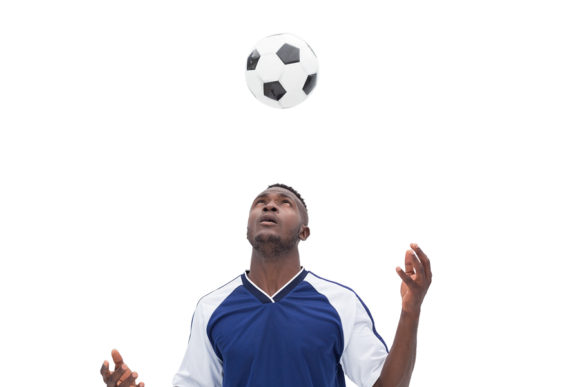Football or soccer players who tend to head the ball a lot may be more likely to have balance problems than players who do not head the ball as often.
“Soccer headers are repetitive subconcussive head impacts that may be associated with problems with thinking and memory skills and structural changes in the white matter of the brain,” says John Jeka, PhD, of the University of Delaware in Newark, Del. “But the effect of headers on balance control has not been studied.”
Jeka is one of the authors of a preliminary study released today at the American Academy of Neurology’s Sports Concussion Conference in Indianapolis.
The study found that the players with the largest number of headers had the largest balance responses in both foot placement and hip adduction during a walking test, which indicated that they had vestibular processing and balance recovery problems. Researchers found for every 500 headers, foot placement response increased about 9 millimeters and hip adduction response increased about 0.2 degrees.
“Soccer players must have good balance to play the game well, yet our research suggests that headers may be undermining balance, which is key to all movement, and yet another problem now linked to headers,” said another study author, Fernando V. Santos, PT, of the University of Delaware. “It is important that additional research be done to look more closely at this possible link with balance and to confirm our findings in larger groups of people.”
For the study, 20 football (or as U.S. calls it, soccer) players recruited from the community in Newark, N.J. took a balance test where they walked along a foam walkway with their eyes closed under several conditions. The athletes, who had an average age of 22, also completed questionnaires about how many times they had headed the ball during the past year. The number of headers over a year for each participant ranged from 16 to 2,100, with an average of 451 headers.
The authors acknowledge that relying the players’ memories about reporting how many times they headed the ball is a limitation of their study.
The study was supported by the National Institutes of Health.
Was this article valuable?
Here are more articles you may enjoy.



 SIAA Announces Strategic Partnership With Progressive
SIAA Announces Strategic Partnership With Progressive  Consumer Acceptance of Telematics Widens, Says Survey
Consumer Acceptance of Telematics Widens, Says Survey  Supreme Court Rejects Challenge to $2.46B Boy Scouts Sex Abuse Settlement
Supreme Court Rejects Challenge to $2.46B Boy Scouts Sex Abuse Settlement  Billionaire NFL Owner Suing Over Billboards Near His LA Stadium
Billionaire NFL Owner Suing Over Billboards Near His LA Stadium 

